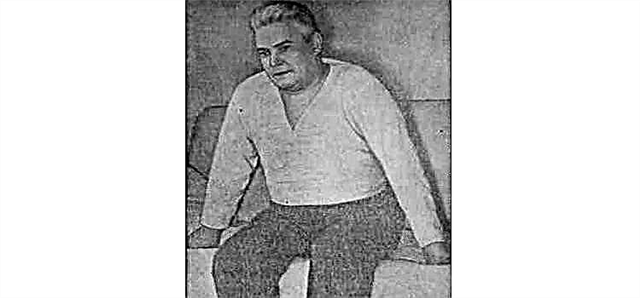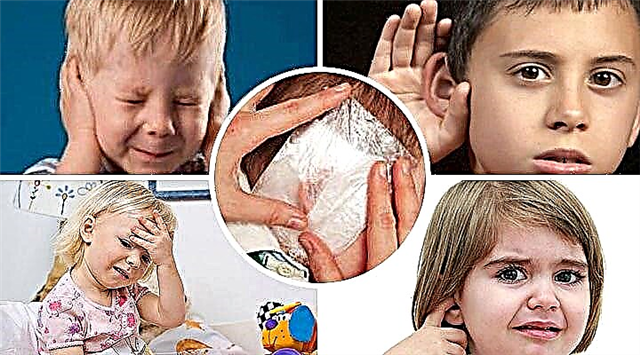Cyst of the maxillary sinuses is a fairly common disease, it occurs in about 10% of the world's population. However, most patients do not even know they are sick. It is quite difficult to diagnose an ailment in the early stages for the reason that it in no way makes itself felt. When the growth begins to grow, the symptoms resemble sinusitis, rhinitis, colds, and other similar inflammatory processes. Removing a cyst in the nose is the most rational method of treatment, since conservative measures do not give the desired effect.
When an operation is prescribed
 Surgical removal of a cyst from the nasal sinus is indicated only in cases where its volume exceeds 1.5 cm. However, it may be that a small neoplasm causes complications, in which case, it must be eliminated as soon as possible.... If the disease is asymptomatic, the cysts are small and do not disturb the patient, they need to be regularly monitored by an otolaryngologist. If the picture changes for the worse, the doctor immediately decides on the surgical intervention.
Surgical removal of a cyst from the nasal sinus is indicated only in cases where its volume exceeds 1.5 cm. However, it may be that a small neoplasm causes complications, in which case, it must be eliminated as soon as possible.... If the disease is asymptomatic, the cysts are small and do not disturb the patient, they need to be regularly monitored by an otolaryngologist. If the picture changes for the worse, the doctor immediately decides on the surgical intervention.
Sinusotomy is prescribed for such complications in a patient:
- headache;
- pain syndrome in the area of the affected sinus (can be given to the eyes, ears, frontal part, increases with tilting the head);
- problems with nasal breathing;
- purulent or mucous discharge from the nostril located on the side of the affected sinus;
- visual impairment, double vision, as the center of the eyeball shifts and the optic nerve is pinched;
- swelling of the face in the area where the cysts are located;
- decreased mental and physical activity.
Features of the choice of operation
Only a doctor can find out exactly which sinusitis will be most suitable for the patient. The operation technique depends on many factors that should be taken into account to prevent complications. First of all, it is necessary to conduct research on the neoplasm, for this they are used  such diagnostic techniques:
such diagnostic techniques:
- collecting anamnesis from the patient's words and his card;
- radiography;
- CT scan;
- Magnetic resonance imaging;
- maxillary sinusography, when a contrast fluid is injected into the maxillary sinuses;
- endoscopy, in which the doctor sees on the monitor the entire nasal cavity and maxillary sinuses;
- biopsy, a diagnostic method in which part of the cyst is taken for microbiological, biochemical and cytological analysis.
In addition to what the doctor takes into account when choosing a surgical intervention, the peculiarities of the location of the cyst, its volume, size and other parameters, he pays attention to the type of neoplasm.
It can be true (retention) - it is created from the mucous membrane itself and has an inner layer that produces a secret. There are also false or pseudocysts (odontogenic) - they are formed due to inflammatory processes in the teeth of the upper jaw and are formed not only from mucous membranes, but also from other tissues.
Methods for removing neoplasms
Previously, doctors used only a scalpel for excision of neoplasms in different cavities. Nowadays, there are safer and more innovative methods with which sinusitis has ceased to be a serious and difficult operation. However, it is not always possible to apply modern technologies, since they require special expensive equipment and trained personnel, which is a shortage in most clinics at the moment. Consider what methods are used to eliminate the disease today.
Classical resection by Caldwell-Lucas access
This method of surgical removal allows you to provide the most convenient access to the neoplasms and remove them completely. An incision is made at the top of the upper lip from the side of the affected sinus. Through it, the front wall of the maxillary sinus is opened, with the help of instruments, cysts are removed.
The technique is quite ancient, but it is still widely used, since it does not require the use of high-quality expensive equipment and is well studied by doctors.
| Advantages | disadvantages |
|---|---|
| Ability to completely remove one cyst or several cysts at once. | A high degree of injury to healthy tissues. |
| Convenient access to neoplasms. | The presence of incisions in the oral cavity. |
| Complete knowledge of the technique in the circle of surgeons. | The need for general anesthesia. |
| Scar tissue formation on the sinus walls, leading to chronic rhinitis and sinusitis. | |
| Long period of rehabilitation. | |
| High likelihood of complications. |
Laser removal
With the help of a directed laser beam, a variety of neoplasms are now being removed, including cysts in the paranasal sinuses. Sinus sinusitis of this type does not take much time, it is carried out in 20-40 minutes. A special instrument is inserted into the sinuses through a natural opening, which minimizes trauma to healthy tissues. The beam acts directly on the neoplasms, they begin to melt from the ultra-high temperature. In this case, all vessels and capillaries that are encountered on the way are sealed, which excludes the appearance of edema or infection.
| Advantages | disadvantages |
|---|---|
| Painlessness, only local anesthesia is needed. | Equipment for sinusitis is not available everywhere. |
| Minimal damage to healthy tissue. | |
| Execution speed. | |
| Bloodlessness. | Lack of trained personnel. |
| Fast and easy rehabilitation. | |
| No stitches and scars. | The high cost of the procedure. |
| The minimum number of contraindications (mono to carry out even for asthmatics). |
Endoscopic sinusitis
This type of removal is considered the most effective and safest; it is the so-called "gold standard" in surgery. A special instrument, the endoscope, is inserted into the sinus cavity through the anastomosis; no incisions are required. The miniature camera, which the instrument is equipped with, displays the image on a large monitor, the doctor perfectly sees everything that happens in the sinus and can only work with the affected tissues.
| Advantages | disadvantages |
|---|---|
| Low invasiveness. | Lack of innovative equipment for the operation. |
| High precision of the surgeon's movements. | |
| High speed of execution, only 20-40 minutes. | |
| Lack of postoperative scars and scars. | Lack of trained personnel. |
| Simple and quick rehabilitation period. | |
| The minimum number of contraindications. | The high cost of the operation. |
| Ability not to use general anesthesia. | |
| The possibility of outpatient treatment. |
Possible complications
The results of sinusitis depend not only on the skill of the surgeon, but also on how correctly the patient fulfills all the recommendations during the rehabilitation period. Negative consequences are quite rare after the operation, but they still occur. The patient may experience bleeding in the suture area, edema is felt, it is difficult to breathe, and the head hurts. Most often, these symptoms subside on the second day with proper care.
The most unpleasant feature of sinusitis is that it does not give a 100% guarantee that there will be no recurrence of the cyst. The neoplasm can reappear in the paranasal sinus if the patient does not take any preventive measures.
 To avoid reoperation, you should follow these recommendations:
To avoid reoperation, you should follow these recommendations:
- treat all diseases in the body on time and to the end, especially of the upper respiratory tract;
- treat teeth to the end;
- be vaccinated against viral diseases;
- use antiallergenic agents for personal intolerance;
- strengthen immunity;
- avoid contact with sick people to prevent infection;
- lead a healthy lifestyle.
Let's summarize
Conservative methods of treating paranasal sinus cysts do not give 100% of the result, therefore doctors recommend removing neoplasms. Now classical surgical techniques and modern low-traumatic methods of sinusitis are used. The problem with applying innovative solutions is that they are not yet available to all segments of the population. The choice of the operation is made by the patient himself after consulting a doctor.



